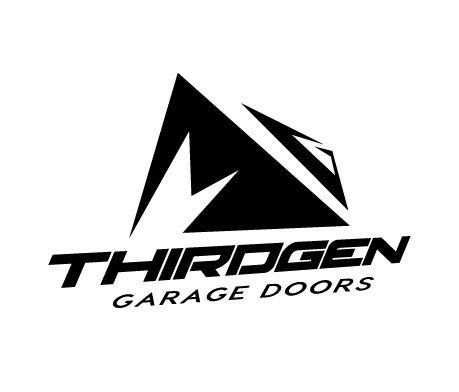Blog
DIY Garage Door Repair Tips and Tricks: A Comprehensive Guide
This comprehensive guide will provide you with tips and tricks for DIY garage door repair.
- Common Garage Door Problems
- Basic Garage Door Repair Tools
- DIY Garage Door Repair Tips and Tricks
- Safety Precautions
- When to Call a Professional
However, like any other mechanical system, garage doors can malfunction and require repairs. While some garage door issues may require professional attention, there are some basic repairs you can do yourself, saving time and money.
Part 1: Common Garage Door Problems
Garage doors can experience various issues, but here are some of the most common ones you may encounter:
Noisy Garage Door
A noisy garage door can be a nuisance to you and your neighbors. The noise can result from loose hardware, worn-out rollers, or lack of lubrication.
To fix a noisy garage door, you can try these DIY solutions:
- Tighten Loose Hardware – Check and tighten all nuts and bolts on your garage door and track.
- Replace Worn-out Rollers – Rollers can wear out over time and cause noise when they move. Replace any worn-out rollers with new ones to reduce the noise.
- Lubricate Moving Parts – Lubricating the garage door’s moving parts, such as the hinges and springs, can help reduce the noise.
Stuck or Jammed Garage Door
A garage door that gets stuck or jams can be frustrating, especially when you must leave or enter your home.
Common causes of a stuck or jammed garage door include:
- Obstructed Tracks – Inspect the tracks and remove debris or objects blocking the door’s path.
- Damaged Tracks – If the tracks are bent or damaged, they can cause the garage door to get stuck. Consider repairing or replacing the tracks.
- Broken Springs – Broken garage door springs can also cause the door to get stuck. Replace any broken springs with new ones.
Garage Door Opener Not Working
A garage door opener that fails to function can be a sign of various issues, such as:
- Dead Batteries – Replace any dead batteries in your remote or keypad.
- Misaligned Sensors – Check the sensors at the bottom of the garage door to ensure they are aligned correctly.
- Faulty Motor – If the opener’s motor is faulty, consider replacing it.
Part 2: Basic Garage Door Repair Tools
You need to have some basic tools to perform DIY garage door repairs. These include:
- Hammer
- Screwdrivers
- Pliers
- Wrenches
- Lubricant
- Replacement Parts (such as rollers, springs, and tracks)
Part 3: DIY Garage Door Repair Tips and Tricks
Now that you know some common garage door problems and the tools you need for DIY repairs, here are some tips and tricks to help you repair your garage door:
How to Lubricate a Noisy Garage Door
Lubricating your garage door’s moving parts is an easy DIY repair that can reduce noise. Here’s how to do it:
- Choose the Right Lubricant – Use a silicone-based lubricant for your garage door, as it doesn’t attract dirt like oil-based lubricants.
- Step-by-Step Instructions – Apply the lubricant to the door’s moving parts, such as the hinges, springs, and rollers. Wipe off any excess lubricant.
How to Align a Garage Door
A misaligned garage door can cause issues like uneven door movement or jamming. Here’s how to align your garage door:
- Signs of Misalignment – Check for gaps between the door and the frame or uneven door movement, which can be signs of misalignment.
- Step-by-Step Instructions – Adjust the tracks on both sides of the door to align them. Use a level to ensure the tracks are straight.
How to Replace a Broken Spring
A broken garage door spring can cause the door to become heavy and difficult to open or close.
Here’s how to replace a broken spring:
- Signs of a Broken Spring – Check for a noticeable gap in the torsion spring or a loud noise when the door moves. These can be signs of a broken spring.
- Safety Precautions – Wear safety gear such as gloves and goggles when replacing a broken spring. Torsion springs are under high tension, and mishandling them can be dangerous.
- Step-by-Step Instructions – Use winding bars to unwind and remove the broken spring. Install the new spring and tighten it to the appropriate tension.
Part 4: Safety Precautions
When performing DIY garage door repairs, it’s essential to take safety precautions to avoid injuries. Here are some safety tips to keep in mind:
Importance of Safety
Always prioritize safety when repairing a garage door. Wear appropriate safety gear and be cautious around moving parts.
Safety Gear Required
Wear gloves, goggles, and heavy-duty footwear when working on a garage door.
Potential Dangers and Risks
Be aware of the potential dangers such as falling garage doors, torsion spring injuries, and electrocution.
Part 5: When to Call a Professional
While DIY garage door repair can save money, some issues may require professional attention. Here are some situations where you should call a professional:
Complex Repairs
Complex repairs, such as replacing the opener motor or fixing a major structural issue, should be left to professionals.
Lack of Experience
If you need to become more experienced in repairing garage doors, it’s best to call a professional.
Safety Concerns
Call Third Gen Garage Doors if you feel unsafe performing the repair or need clarification on the repair’s potential dangers.
DIY garage door repair can save you time and money, but taking safety precautions and knowing when to call a professional is essential.
By following the tips and tricks outlined in this guide, you can perform basic repairs and keep your garage door functioning correctly.
Remember to prioritize safety and regular maintenance to keep your garage door in top shape.

Working Hours
Monday 6:00 am-6:00 pm
Tuesday 6:00 am-6:00 pm
Wednesday 6:00 am-6:00 pm
Thursday 6:00 am-6:00 pm
Friday 6:00 am-6:00 pm
Saturday 6:00 am-12:00 pm
Sunday Closed
